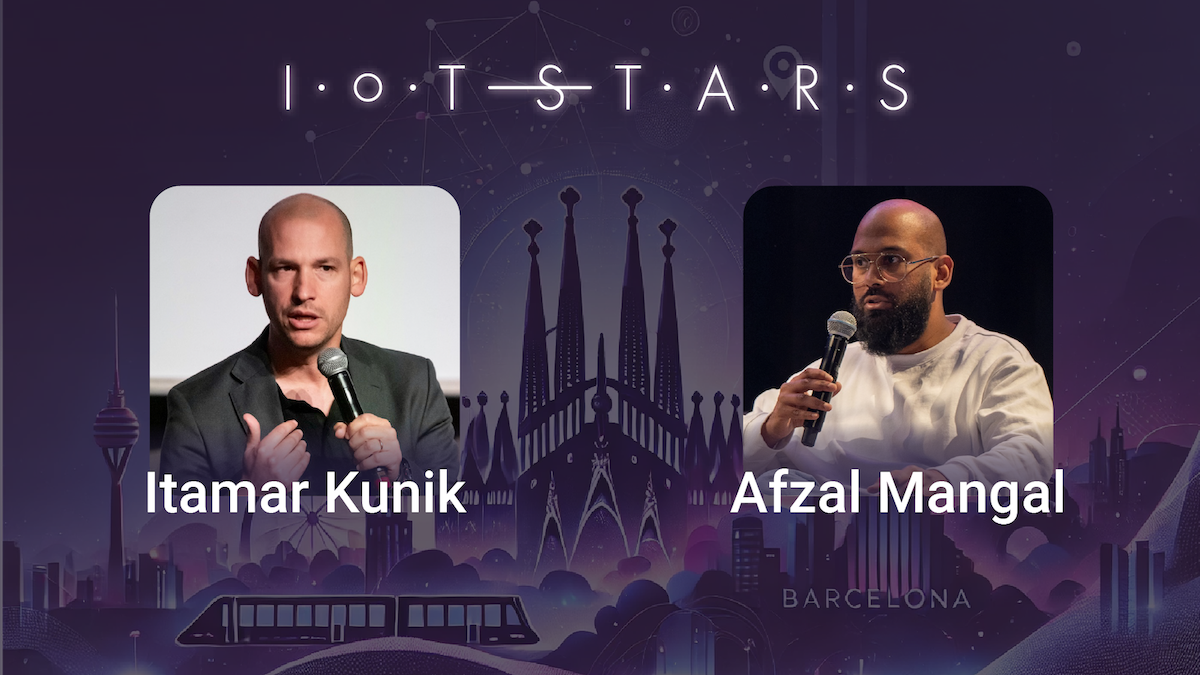Connected Solutions — Built to evolve

Article based on the conversation between Itamar Kunik and Afzal Mangal during IoT Stars at MWC25
When driving an electric car, the vehicle you own today may be completely different next month, containing new features we can barely imagine today. And yet, it’s still the same car.
IoT solutions work the same way. The requirements of a connected device at the time of shipment are often completely different from the needs a couple of years down the line. Connected devices aren’t static; they evolve. Firmware isn’t just a fixed piece of code, it’s dynamic and adaptable. And because many devices are deployed in the field for years, often running on battery power, designing for evolution is crucial.
That’s why Monogoto focuses on software-defined products, allowing for full customization of the product, without the need for physical access.
Software-Defined Experiences
Just 5 years ago, it was unthinkable to hook-up a connected device to a satellite. Today, you can pick up the latest Nordic nRF9151 chip and seamlessly transmit data via satellite providers like Skylo, Terrastar Solutions, or OQ Technology without massive development or implementation costs.
Connectivity becomes a software-defined experience. A device can switch from a public network to a privately-run 4 or 5G network, and it can even roam with satellite networks, all configured from the cloud. Security postures can be updated remotely, even after deployment. It’s possible to set up a VPN connection, block specific ports or adjust firewall rules. It’s all possible without touching the hardware itself. Coupled with better device management tools and firmware-over-the-air (FOTA) updates, IoT is entering a new era of flexibility. Yet, it’s not the technology that went through the biggest evolution, it’s our prioritization.
The largest advancement in IoT is not technology
The biggest advancement in technology according to Itamar? “I believe it’s not the technology itself. Over the past few years, we’ve solved last-mile connectivity challenges with private networks and satellite communications. But the real shift isn’t in the tech itself, it’s in how we prioritize user experience.”
Finding out that a device lost connectivity is a bad experience. “That’s why we enable connectivity in underground locations and in remote areas far off the beaten tracks. We’re taking away the hurdles around connectivity, allowing customers to focus on creating value.”
As a result, Itamar starts to see more and more connected solutions improving our planet and our lives. Not because my car can pick me up, or park itself, but because connectivity enables remote patient monitoring, enables the shared-economy, and reduces environmental impact by optimizing resources. And all of this wouldn’t be possible without our partners and customers who are building real solutions, making real impact.
IoT has grown up, and the focus these days is not on delivering the latest tech, it’s about delivering reliable experiences to our customers.
Afzal Mangal
Interesting links:
- Listen to the full podcast recording on YouTube
- Join the IoT Stars community and stay up-to-date about the latest in IoT: iotstars.com
- Want to learn more about software-defined experiences? Reach out to itamar@monogoto.io